Mike the Mook got himself a sixgun that wasn’t what it seemed…now he’s gonna tell you about it. We asked him to wear a red-faced coat with tails and a shako (like 19th-century Mexican infantry) while he wrote this, but we have no way to confirm if he actually did it.
Just when you thought you’ve seen everything, you find another rock layer.
At first glance, most people think that the pictured revolver is a Colt Single Action Army Model of 1873. The ubiquitous Peacemaker with its plow handle shaped grip, three screws in the frame and distinctive lines has been an iconic revolver for nearly a century and a half.
We have one just like it. Right down to the bone grips. Ours has no front sight or ejector rod housing and based on our research that was how the majority of these revolvers were made.
“Whoa, Montana, what the hell are you talking about? Everyone knows the SAA had a front sight.”
True, but these revolvers are not SAAs.
Here is the revolver pictured alongside a real SAA made in 1903. Aside from the difference in size, this is where the real differences come into view. These bone handled revolvers were forgeries made in Spain for the late 19th and early 20th Century gun markets south of the border.
These were designed for markets that had mostly just seen pictures of actual Colts and they made scaled-down variants chambered in 38 S&W, 38 Colt, 32 S&W and 22 LR. We have yet to see a “Mexican Colt” chambered in anything larger. Like other forgeries of the period, every last one we’ve seen was rode hard and put away wet. We estimate ours to be 94 to 117 years old, and it’s still a capable shooter.
It was not just the Outward Colt-ish lines that sold these pistolas. The manufacturer went ahead and applied a counterfeit Colt stamp on the barrel. The majority of folks who purchased these thought that they were buying the real McCoy.
The other myth about these revolvers is that they were made in Mexico. While many have turned up in Mexico and other points south as well as the American Southwest, their actual origin appears to be Spain.
Mexico had long been a dumping ground for the last generation of American arms. When single shot percussion pistols were displaced by the muzzleloading revolver, the single shots went south. As cartridge revolvers displaced black powder revolvers, the black powder guns went south. But when double action revolvers came into prominence, Americans were not quite ready to give up their Single Action Army revolvers. Yet there was still a demand, and while Colt sold a lot of revolvers down Mexico way they still couldn’t meet the demand, so counterfeiters from Spain stepped in.
SAA fakes have been found in almost all flavors in Mexico, but these 80%-sized .38s seem to be the most common.
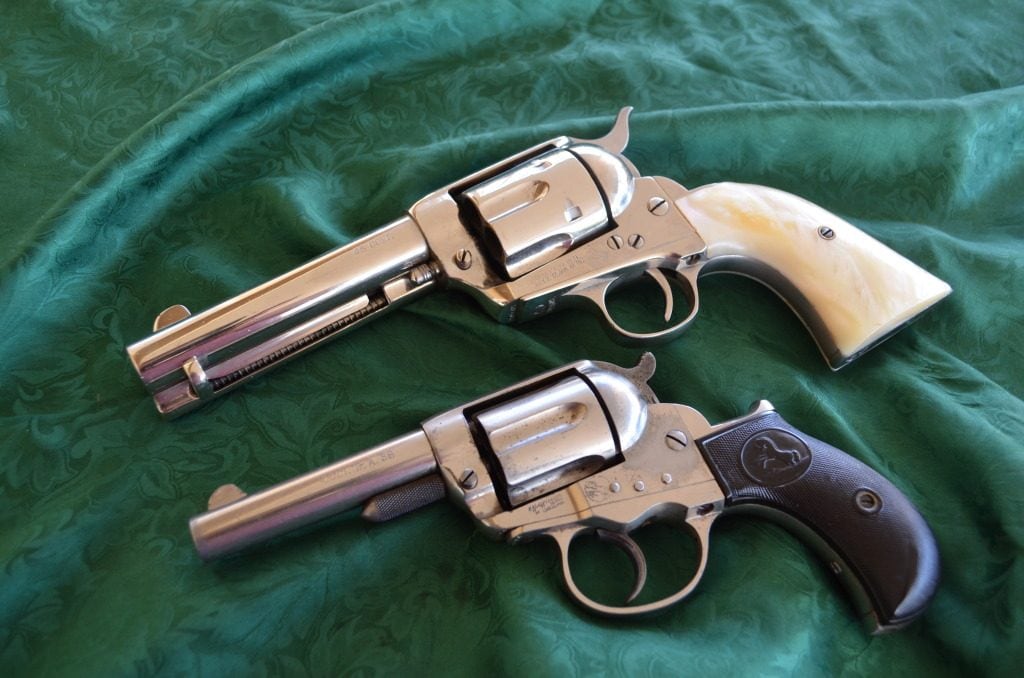
The Colt SAA and Colt Lightning were frequent copies. Note the pinched frame on the Model 1877 Lightning on the bottom; the fakers could never pull this off.
As hard as it is to date these types of pistols, we put the latest date of manufacture at 1923 due to the absence of proof marks, and that was the year Spain mandated that all firearms must be proofed.
These Mexican pocket Colts always exhibit several lifetimes of abuse. Surprisingly we have always liked the smaller size and wonder why Colt never offered a pocket pistol of their own in this style.
It could not possibly be that they feared knock-offs!
⚠️ Some hyperlinks in this article may contain affiliate links. If you use them to make a purchase, we will receive a small commission at no additional cost to you. It’s just one way to Back the Bang. #backthebang
⚠️ Some hyperlinks in this article may contain affiliate links. If you use them to make a purchase, we will receive a small commission at no additional cost to you. It’s just one way to Back the Bang. #backthebang

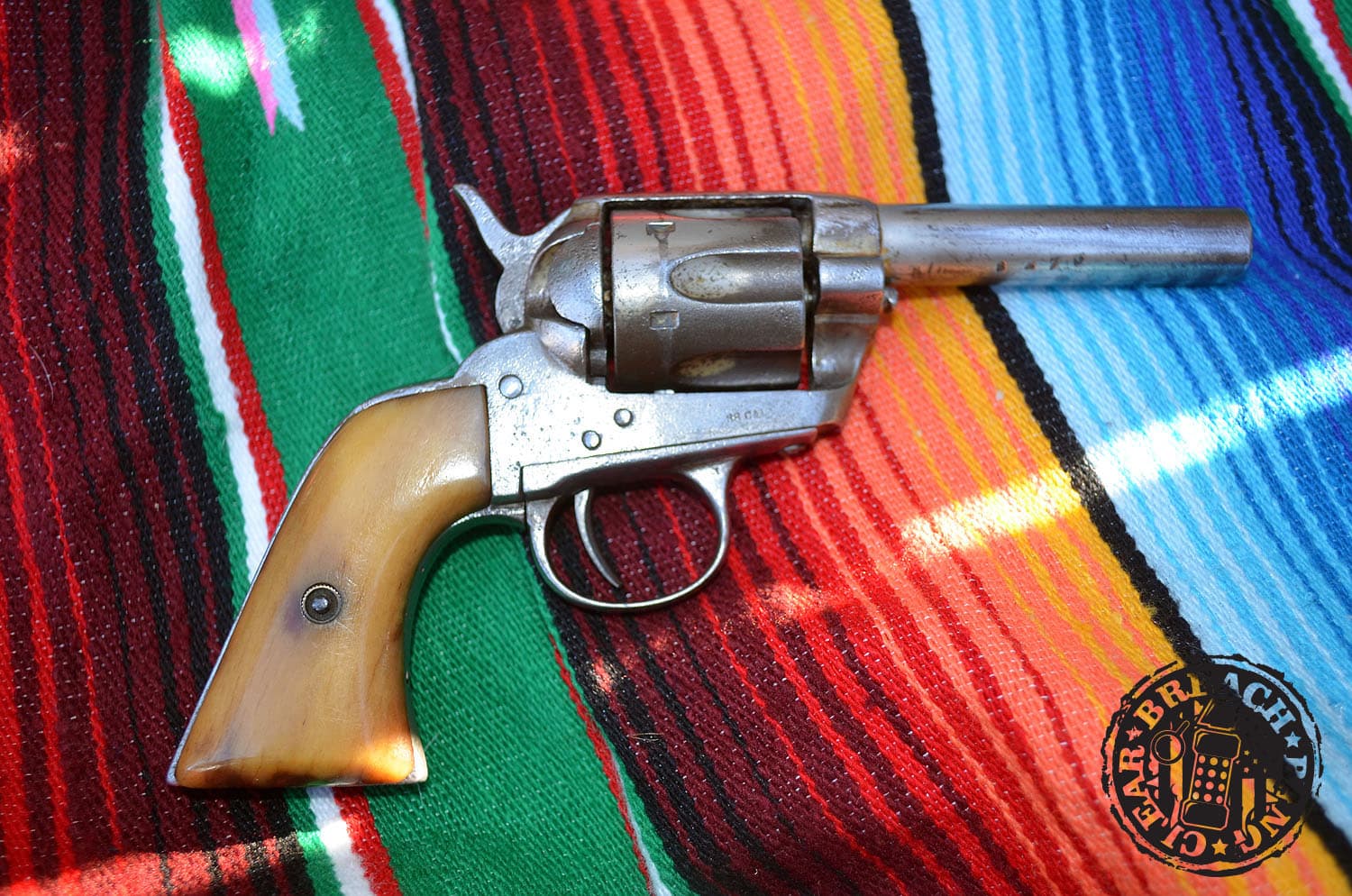
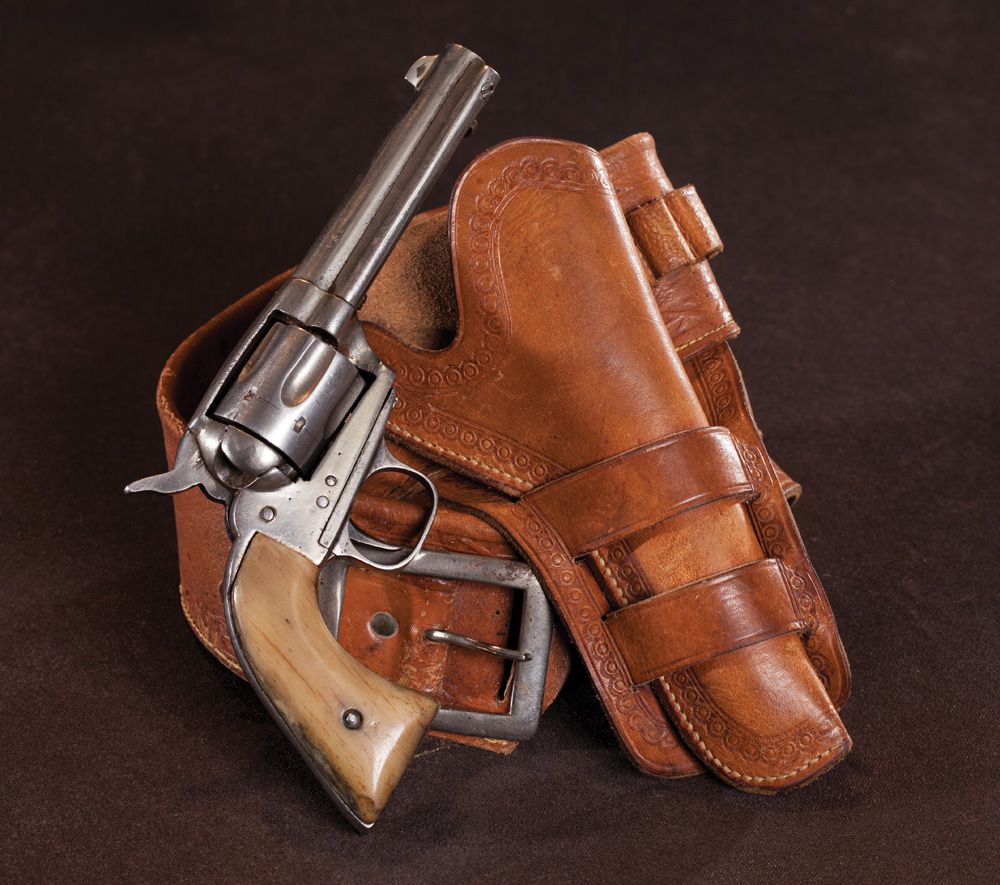





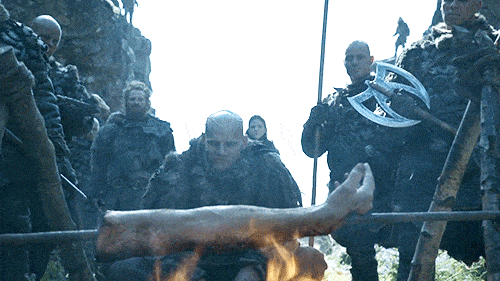
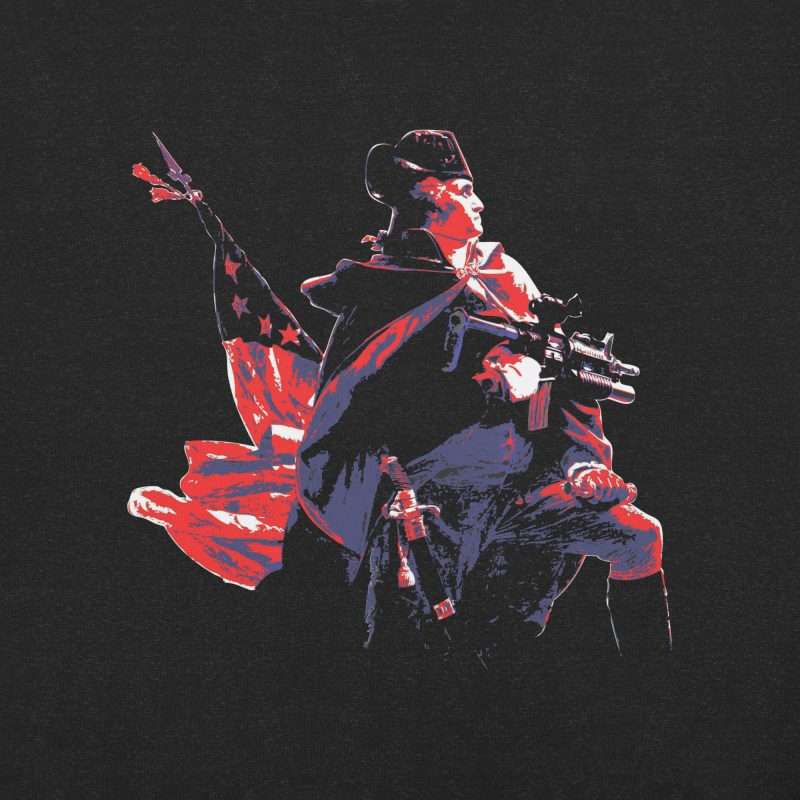

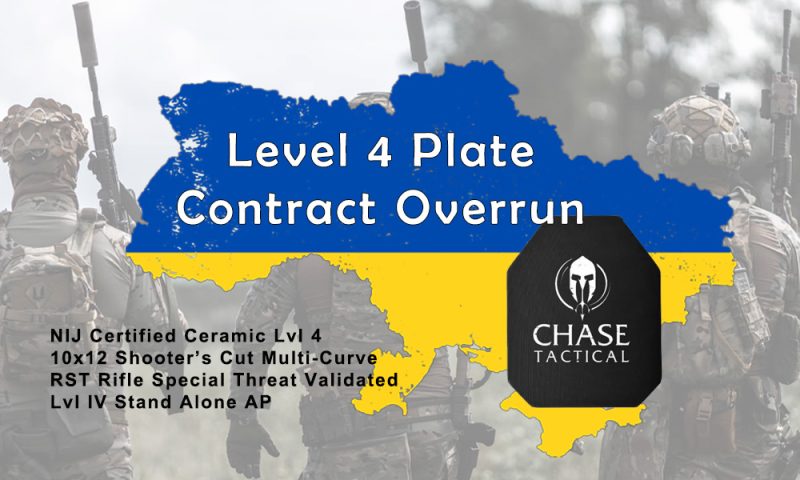




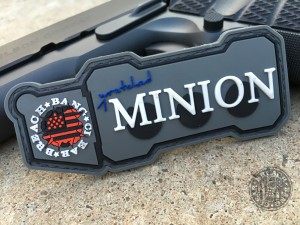
I have one in 44-40, no front sight but has ejector rod. Number ’41’ pops up in several places, stamped ’44’ on left frame. Bone grips have chip missing, could use a new set. Plenty of rifling, but pitted, cylinder as well. All in all, nice shape for what it is!
Hi,
I recent bought what looks like one of these Mexican Colts. Kind of rough, definitely looks it’s age. I thought the ejector housing was just missing, but thanks to article now know it was made that way. One very interesting feature is that the grips have a hand stitched raw hide cover. Very old and definitely period addition. Bought as pretty much a display piece for $150. One thing of interest is it is stamped “45 CAL”.